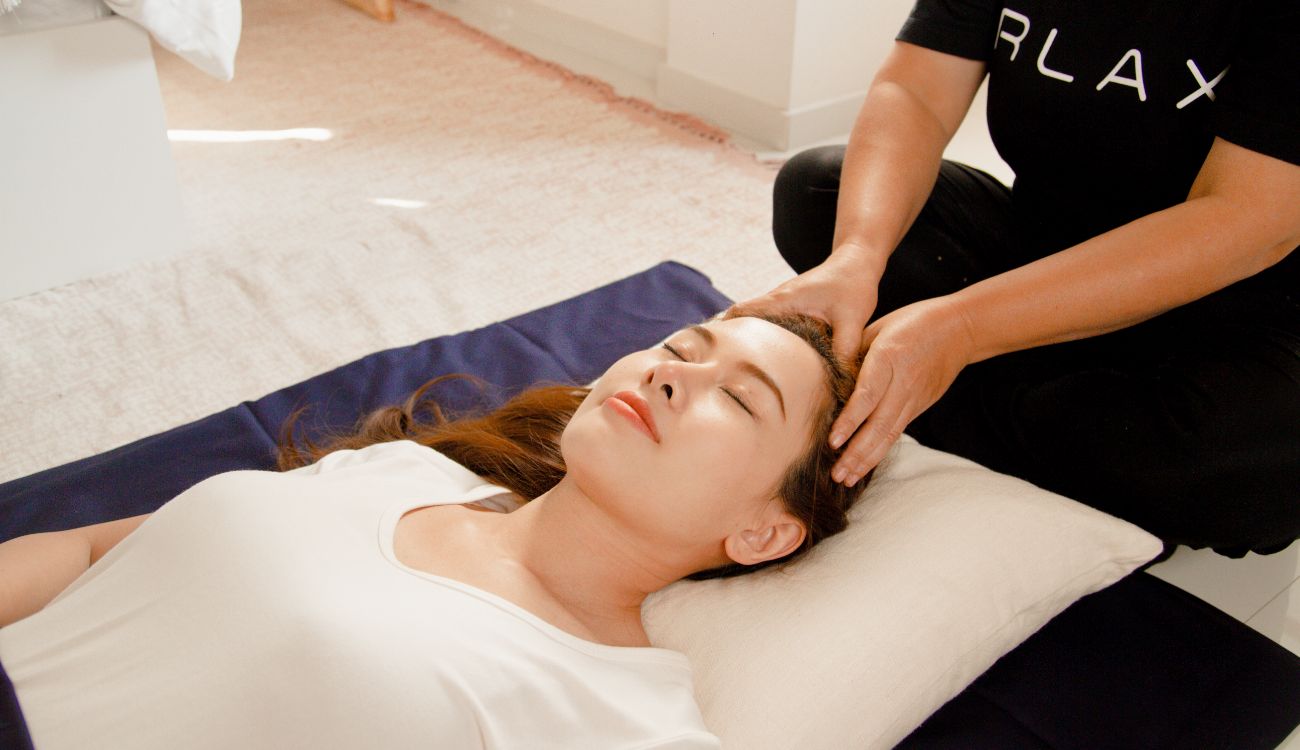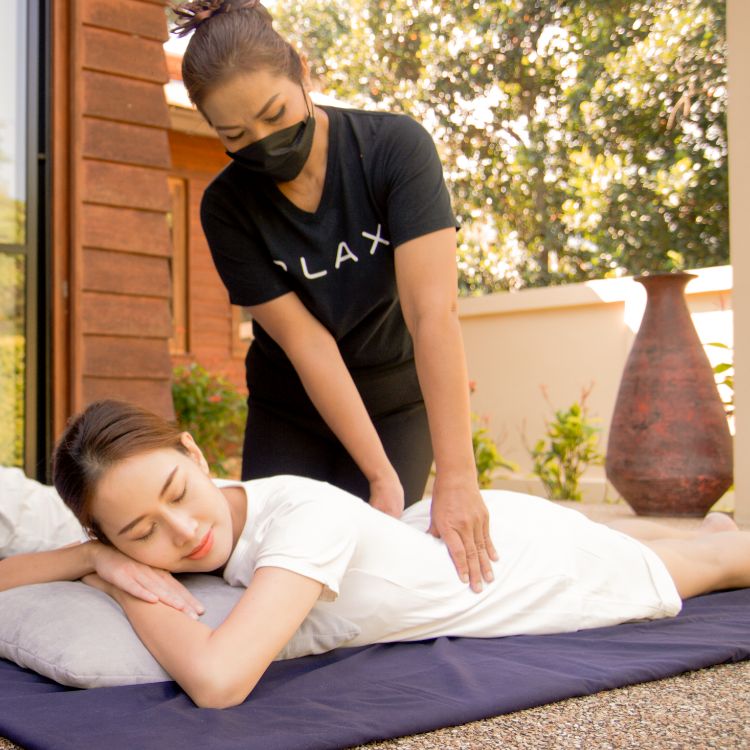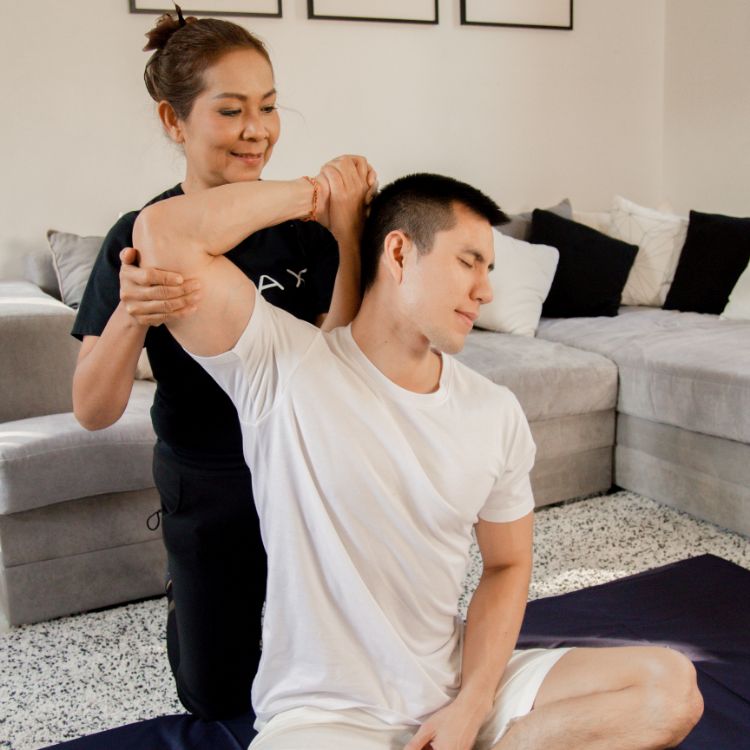Exploring the Benefits and Techniques of Head, Back, and Shoulder Massage
September 18, 2023

In today's fast-paced world, stress and tension can take a toll on our bodies, especially in the head, back, and shoulders. A good massage can work wonders to alleviate this discomfort and help you achieve ultimate relaxation. In this article, we will explore the benefits of head, back, and shoulders massage and delve into some effective techniques that you can try at home or with a professional therapist.
The head, back, and shoulder massage combines Thai massage techniques with acupressure.
It helps alleviate muscle pain and stiffness, leaving you with a sense of relaxation.
The massage is suitable for individuals who frequently engage their upper body muscles.
The Benefits of Head, Back, and Shoulders Massage
Improved Blood Circulation
One significant advantage of getting a head, back, or shoulder massage is that it helps improve blood circulation in these areas. Increased blood flow brings more oxygen and nutrients to your muscles while also removing waste products like lactic acid. This process promotes faster healing for sore muscles and reduces inflammation. Enhancing blood circulation is incredible beneficial for your body and you cam amplify this effect further with the application of a bamboo massage.
Reduced Muscle Tension
Massaging tight muscles in your head, back, and shoulders helps break up adhesions (knots) that form when muscle fibers become stuck together due to overuse or injury. By releasing these knots through massage techniques such as kneading or friction strokes, you can reduce muscle tension and increase flexibility.
Relief from Headaches
Headaches are often caused by tension in the neck and shoulder muscles. Massaging these areas can help release this tension which may provide relief from headaches. Additionally, massaging the scalp can stimulate nerve endings responsible for pain relief which further alleviates headache symptoms.
Enhanced Mental Well-being
A soothing massage not only relaxes your body but also has positive effects on your mental well-being. It helps reduce stress levels by lowering cortisol (stress hormone) production while increasing serotonin (feel-good hormone) levels. This hormonal balance leads to improved mood and overall emotional well-being. If an office syndrome massage is not delivering the level of relaxation you seek, and you are in search of something even more soothing, a lomi lomi massage might be the ideal choice for you.
Effective Techniques for Head, Back, and Shoulders Massage
Now that we have discussed the benefits, let's explore some effective techniques a therapist can use to provide a massage for the head, back, and shoulders.
Scalp Massage
During a scalp massage, the therapist gently applies pressure using their fingertips in circular motions across the entire scalp. They may also incorporate tapping or gentle pulling motions on the hair to enhance blood flow and stimulate nerve endings.
Neck Massage
To perform a neck massage, the therapist begins with gentle strokes to warm up the muscles. They then use their fingers or knuckles to apply deeper pressure along the sides of the neck. They take care to avoid exerting excessive pressure on the front of the neck, where vital structures such as blood vessels and airways are located.
Shoulder Massage
Therapists will start by kneading the muscles using their fingers or palms. They pay particular attention to areas of tension or knots. If necessary, they may utilize their elbow to apply deeper pressure. Additionally, they ensure to address the upper back region between the shoulder blades, which commonly experiences muscle tension.
Back Massage
During a back massage, the therapist focuses on both sides of the spine without directly applying pressure to it. They employ long gliding strokes using their palms or forearms to warm up the muscles before incorporating deeper techniques such as kneading or friction strokes.
It's important for the therapist to communicate with the client throughout the massage, adjusting their techniques and pressure based on the client's preferences and feedback. In case of a pregnancy a consultation with the therapist beforehand is essential to ensure the safety of mother and baby, making prenatal massage a wise consideration.
Therapists prioritize the client's comfort and well-being, ensuring proper body mechanics and posture to prevent strain or fatigue during the massage session.

Who Should Get a Head, Back, and Shoulders Massage?
A head, back, and shoulder massage can benefit individuals who experience tension, stress, or discomfort. Here are some examples of people who might benefit from such a massage:
- Individuals with desk jobs: People who spend long hours sitting at a desk or in front of a computer often experience tension and stiffness in their neck, shoulders, and back. A massage in these areas can help alleviate the discomfort caused by poor posture and sedentary work. For enhanced results, it is worth considering an office syndrome massage.
- Athletes: Athletes, whether professional or recreational, frequently engage in activities that put a strain on their muscles. A head, back, and shoulder massage can help alleviate muscle tightness, improve range of motion, and aid recovery after intense physical exertion, offering specialized attention compared to a sports massage.
- Individuals with stress and anxiety: Stress and anxiety can manifest as tension in the head, neck, and shoulder region. A massage targeting these areas can provide relief and help promote relaxation and stress reduction.
- Individuals with chronic pain: People suffering from chronic pain conditions such as fibromyalgia, tension headaches, or neck and back pain may find relief through targeted massage therapy. A head, back, and shoulder massage can help reduce pain and improve overall well-being.
It's important to note that these are just general examples, and the suitability of a massage may vary from person to person. If you have specific concerns or medical conditions, it's advisable to consult a healthcare professional or a licensed massage therapist to determine if a massage is appropriate for you.
